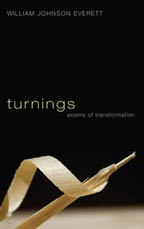Annunciation. That is what we call the angel Gabriel’s message to the virgin Mary in Luke’s Gospel story (Luke 1:26-38). In Matthew’s version, it is only related that “an angel” came to Joseph to tell him that Mary would bear a son, not by Joseph’s act but by the work of the Holy Spirit. All of this was to fulfill Isaiah’s  prophecy that “”a young woman shall conceive and bear a son and shall call his name Immanuel.” (Isaiah 7:14)
prophecy that “”a young woman shall conceive and bear a son and shall call his name Immanuel.” (Isaiah 7:14)
Embellished in poems, liturgies, stories, songs, paintings and sculptures for centuries since, it is also an ethical and theological stumbling block for many, including me. It is yet another image of a male sovereign violating the integrity of a woman for his own purposes. The violations of biological science are merely additional burdens the story must bear. And yet it has walked the corridors of my imagination all these years, thanks not only to Botticelli and the Renaissance masters, but also to this stunning sculpture by my friend Charles McCollough, which was presented to me on my retirement from Andover Newton Theological School. It is only now, however, that I have finally made a proper pedestal for it, bringing her gasp and her stunned hand closer to my eyes, lifted up, so to speak, on angels’ wings.
And now it continues to provoke me. Separated out from the gender politics and scientific critique, it speaks to an even more universal religious question: How am I to be a bearer of the divine creativity in this world? The Annunciation tells us that we will be taken wholly by surprise by God’s answer to this question. It will stop our words in our throats. It will cause us to clutch our gut. It will drive us to our knees. We will not understand it until we search our distant past and attend on our distant future. And even then our understanding of the meaning of our life’s work is stunted by the limits of our minds and hearts.
 Gabriel was not offering a proposal or a contract. He was simply announcing. It was left to Mary only to ponder it in her heart, to wonder, to “bear” this news until it issued in painful birth and painful death. And so we are offered a glimpse into our own bearing of whatever mysterious vocation is ours. The faith for which Mary is honored is a form of knowledge in only the sketchiest sense—the knowledge that she has been called into a mystery. The model of faith she gives us is more simply to live with and into whatever working of God is going on in our life and that our life participates in a wider work that brings the creation closer to its ultimate fullness and beauty. And so we gasp, and clutch, and kneel in pain. Waiting. Hoping. Becoming the beauty the world longs for.
Gabriel was not offering a proposal or a contract. He was simply announcing. It was left to Mary only to ponder it in her heart, to wonder, to “bear” this news until it issued in painful birth and painful death. And so we are offered a glimpse into our own bearing of whatever mysterious vocation is ours. The faith for which Mary is honored is a form of knowledge in only the sketchiest sense—the knowledge that she has been called into a mystery. The model of faith she gives us is more simply to live with and into whatever working of God is going on in our life and that our life participates in a wider work that brings the creation closer to its ultimate fullness and beauty. And so we gasp, and clutch, and kneel in pain. Waiting. Hoping. Becoming the beauty the world longs for.







 Red Clay, Blood River
Red Clay, Blood River
A comment from Gerd Decke, a dear friend and colleague:
You are writing about the annunciation of the virgin birth:
Embellished in poems, liturgies, stories, songs, paintings and sculptures for centuries since, it is also an ethical and theological stumbling block for many, including me. It is yet another image of a male sovereign violating the integrity of a woman for his own purposes. The violations of biological science are merely additional burdens the story must bear.
This problem does not include me. For I see it this way: God is doing here the absolutely mysterious, not at all normal historical act in order to overcome human limitations. He is willing and able to break through the laws of his own creation for the sake of human salvation. As a Catholic woman friend of ours says: God entrusts the most precious gift he has to give to a woman.
So it is off target to see this event as “another image of a male sovereign violating the integrity of a woman for his own purposes.” It is rather the other way round, for here God helps this young girl to become an adult woman in the full sense. For in traditional cultures without a child you are not an adult, neither as a man nor and even more so as a woman. “The violations of biological science” are not any “additional burdens” because God enacts something mysterious beyond human imagination. As the Gospel of John says: “As many as received Him, to them He gave the right to become children of God, to those who believe in His name: who were born, not of blood, nor of the will of the flesh, nor of the will of man, but of God.” (John 1:12.13) It is rather not at all a man “violating the integrity of a woman”. God is not man, rather he/she/it/they is/are three in one, and as the Spirit God is the divine power of the creator continuing his creation.
For some fortunate reason I have never had problems of doubting the virgin birth. If that is doubtful then God as such is doubtful. Since I have faith and trust in God, then why question the act that breaks through human biology, normalcy and history. As my wife Gerit says, this virgin birth is the nutshell out of which all the miracles, parables, heated controversies and “pregnant” symbolic actions of Jesus are emanating. To just mention two most important stories, both in the same chapter of Luke 10 (verses 25-37 and 38-42) illustrating the double commandment of love (love of neighbor and love of God).
There is the parable of the Good Samaritan illustrating love of the enemy (Samaritan shows love of neighbor to a Jew) as the highest form of love of the neighbor thereby evidently breaking through human normalcy. And then there is the story of Mary and Martha as hosts of Jesus and his disciples showing love of God as more important than staying within the traditional female role model. Jesus appreciates Mary has chosen the better part, i.e. listening to Jesus talking about the Kingdom of God rather than serving at the table (“one thing is needed, and Mary has chosen that good part, which will not be taken away from her”). Actually, if we Christians had taken the Bible seriously, this story should have lead to a breakthrough of traditional roles and created equality of men and women among the disciples and the followers of Christ right then and there, and eventually should have opened the way to women’s ordination. But human nature and tradition being as it is, it took about 2000 years (only) for this insight to break through.
Extremely important breakthroughs following the all important breakthrough of the virgin birth of Jesus, son of God and son of Mary.
As our friend Ulrich used to say, “I could go on and on, and I will”. But I won’t.
thank you for triggering these thoughts.
Love,
Gerd
P.S. I am sorry to say that I missed commenting on Sylvia’s wonderful piece of art in your last blog. I thought it was stunning.
You certainly have captured the combination of angst and excitement as I face the makings of my own future. So much to consider. How not to be overwhelmed? That we are the seeds of a sacred future is perplexing, but a SACRED future too.